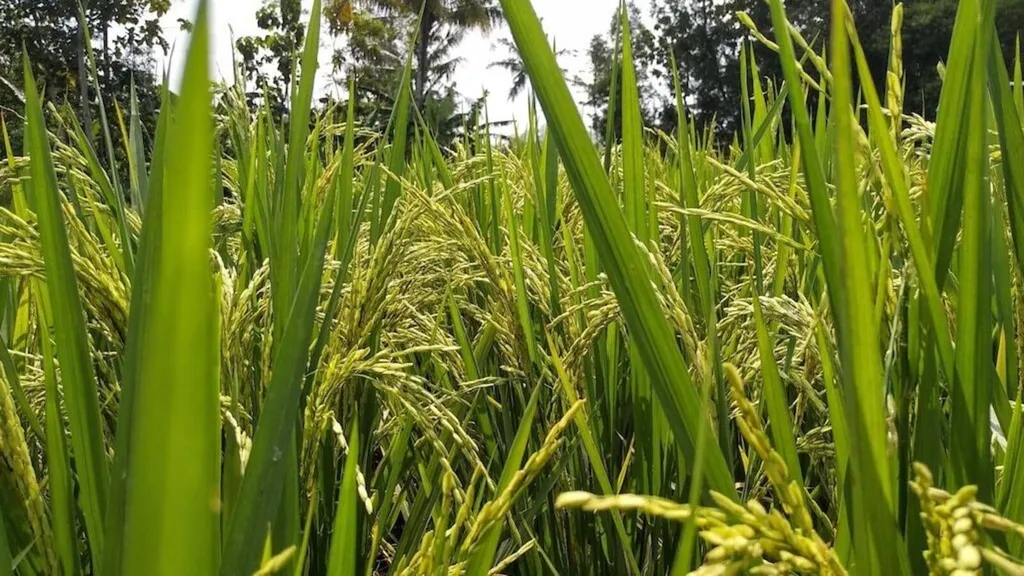In the heart of Gabon, a groundbreaking study is unfolding that could reshape the future of rice cultivation. Researchers at the Institute of Agronomic and Forestry Research (IRAF) in Libreville have been meticulously evaluating advanced double haploid lines of rice, aiming to identify high-yielding varieties that can thrive under irrigated conditions. The findings, published in ‘Cogent Food & Agriculture’, offer promising insights into the agronomic performance of these elite rice lines, potentially paving the way for enhanced productivity and commercial opportunities in the agriculture sector.
The study, led by Yonnelle Dea Moukoumbi, focused on ten double haploid lines and five high-yielding check varieties. Conducted over two wet seasons at the Kougouleu research station, the experiments employed a randomized complete block design (RCBD) with three replications. The researchers collected and analyzed data on ten agronomic traits, including plant height, number of tillers, days to 50% heading, days to 80% maturity, and grain yield.
The results revealed significant differences (p < 0.005) between years and genotypes, highlighting the variability in performance among the lines. Notably, the number of tillers at 30 days after sowing (DAS) showed positive interactions with plant height, grain yield, and harvest index. At 60 DAS, the number of tillers per plant and the harvest index were positively associated with grain yield. "These findings suggest that early vigor, as indicated by the number of tillers, is a crucial factor in determining the yield potential of these rice lines," Moukoumbi explained.However, the study also uncovered some negative relationships. For instance, grain yield was negatively correlated with plant height at 30 DAS, 60 DAS, and maturity, as well as with the number of tillers at 60 DAS and plant height at 30 DAS, 60 DAS, and maturity. "This indicates that while early vigor is important, excessive vegetative growth can potentially divert resources away from grain production, ultimately reducing yield," Moukoumbi noted.Cluster analyses further revealed two distinct groups among the lines, allowing researchers to identify promising lines with superior agronomic traits. These findings could have significant implications for rice breeders and farmers alike. By selecting lines with optimal early vigor and balanced vegetative growth, breeders can develop high-yielding varieties tailored to specific environmental conditions. This, in turn, can enhance productivity and profitability for farmers, contributing to food security and economic growth in the region.The study's emphasis on variability and correlation among agronomic traits underscores the importance of a comprehensive understanding of plant performance. As Moukoumbi and her team continue to unravel the complexities of rice cultivation, their work could shape future breeding strategies and agricultural practices. "Our goal is to provide farmers with the tools they need to succeed," Moukoumbi said. "By identifying and promoting high-yielding, adaptable varieties, we can help ensure a sustainable and prosperous future for the agriculture sector."As the global demand for rice continues to rise, the need for innovative, high-yielding varieties becomes increasingly pressing. The research conducted by Moukoumbi and her colleagues at the IRAF offers a glimmer of hope, demonstrating the potential of double haploid lines to meet this challenge. With further research and development, these findings could revolutionize rice cultivation, benefiting farmers, consumers, and the environment alike.

